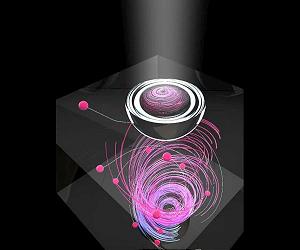Five years after the Paris climate agreement, all eyes are on the world’s progress on the road to a carbon-free future. A crucial part of this goal involves the energy transition from fossil fuels to renewable sources, such as sun, water, wind and wave energy. Among those, solar energy has always held the highest hope in the scientific community, as the most reliable and abundant energy source on Earth.
In recent decades, solar cells have become cheaper, more efficient, and environment friendly. However, current solar cells tend to be opaque, which prevents their wider use and integration into everyday materials, constrained to being lined up on roofs and in remote solar farms.
But what if next-generation solar panels could be integrated to windows, buildings, or even mobile phone screens? That is the hope of Professor Joondong Kim from the Department of Electrical Engineering at Incheon National University, Korea. In a recent study published in Journal of Power Sources, he and his colleagues detail their latest invention: a fully transparent solar cell. “The unique features of transparent photovoltaic cells could have various applications in human technology,” says Prof. Kim.
The idea of transparent solar cells is well known, but this novel application where scientists have been able to translate this idea into practice is a crucial new finding. At present, the materials making the solar cell opaque are the semiconductor layers, those responsible for capturing light and translating it into an electrical current. Hence, Prof. Kim and his colleagues looked at two potential semiconductor materials, identified by previous researchers for their desirable properties.
The first is titanium dioxide (TiO2), a well-known semiconductor already widely used to make solar cells. On top of its excellent electrical properties, TiO2 is also an environment-friendly and non-toxic material. This material absorbs UV light (a part of the light spectrum invisible to the naked eye) while letting through most of the visible light range.
The second material investigated to make this junction was nickel oxide (NiO), another semiconductor known to have high optical transparency. As nickel is one of the mist abundant elements on Earth, and its oxide can easily be manufactured at low industrial temperatures, NiO is also a great material to make eco-friendly cells.
The solar cell prepared by the researchers was composed of a glass substrate and a metal oxide electrode, on top of which they deposited thin layers of the semiconductors (TiO2 first, then NiO) and a final coating of silver nanowires, acting as the other electrode in the cell. They ran several tests to evaluate the device’s absorbance and transmittance of light, as well as its effectiveness as a solar cell.
Their findings were encouraging; with a power conversion efficiency of 2.1%, the cell’s performance was quite good, given that it targets only a small part of the light spectrum. The cell was also highly responsive and worked in low light conditions. Furthermore, more than 57% of visible light was transmitted through the cell’s layers, giving the cell this transparent aspect.
In the final part of their experiment, the researchers demonstrated how their device could be used to power a small motor. “While this innovative solar cell is still very much in its infancy, our results strongly suggest that further improvement is possible for transparent photovoltaics by optimizing the cell’s optical and electrical properties,” suggests Prof. Kim.
Now that they have demonstrated the practicality of a transparent solar cell, they hope to further improve its efficiency in the near future. Only further research can tell whether they will indeed become a reality, but for all intents and purposes, this new technology opens a–quite literal–window into the future of clean energy.
Research Report: “Transparent photovoltaic cells and self-powered photodetectors by TiO2/NiO heterojunction”
Related Links
Incheon National University
All About Solar Energy at SolarDaily.com
|
We need your help. The SpaceDaily news network continues to grow but revenues have never been harder to maintain. With the rise of Ad Blockers, and Facebook – our traditional revenue sources via quality network advertising continues to decline. And unlike so many other news sites, we don’t have a paywall – with those annoying usernames and passwords. Our news coverage takes time and effort to publish 365 days a year. If you find our news sites informative and useful then please consider becoming a regular supporter or for now make a one off contribution. |
||
|
SpaceDaily Contributor $5 Billed Once credit card or paypal |
SpaceDaily Monthly Supporter $5 Billed Monthly paypal only |
|

![]()
A polarization-driven guide to making high-performance, versatile solar cells
Incheon, South Korea (SPX) Jan 05, 2021
Improving solar cell design is integral for improving energy consumption. Scientists have lately focused on making solar cells more efficient, flexible, and portable to enable their integration into everyday applications. Consequently, novel lightweight and flexible thin film solar cells have been developed.
It is, however, not easy to combine efficiency with flexibility. For a material (usually a semiconductor) to be efficient, it must have a small “band gap”–the energy required to excite charge … read more
